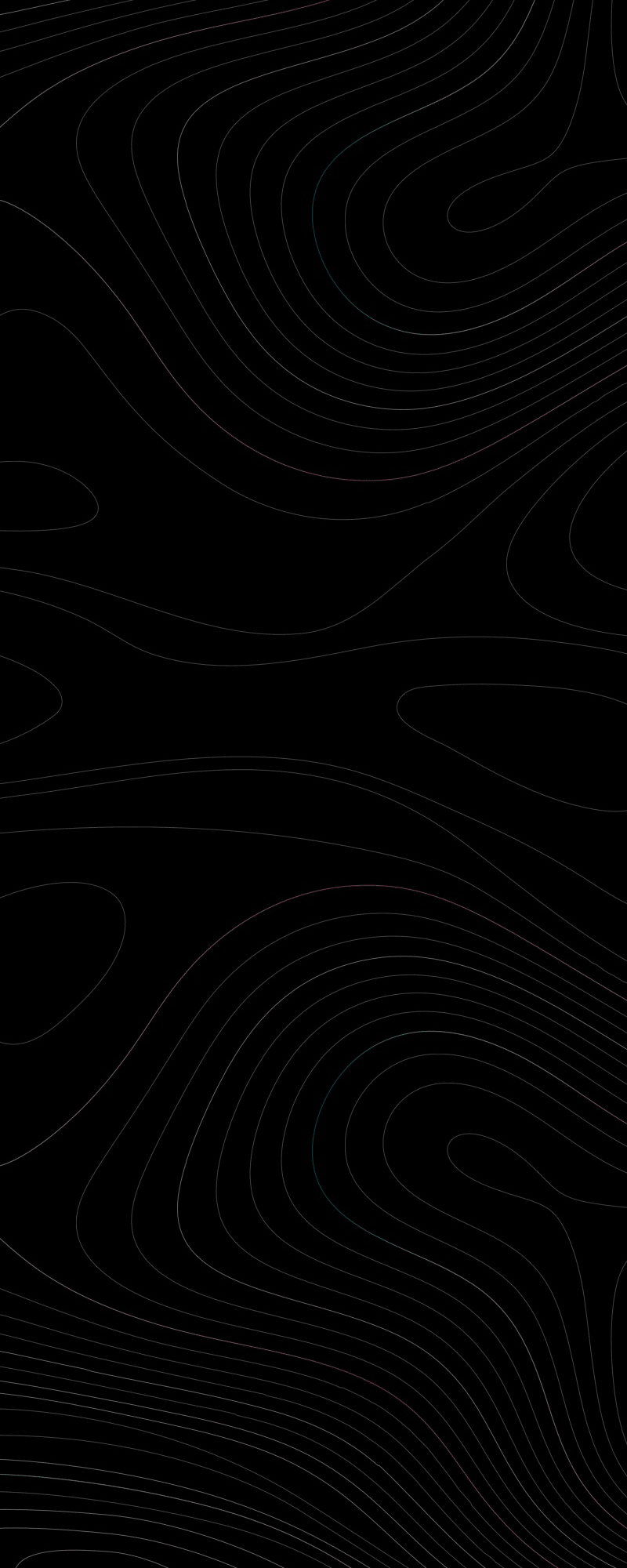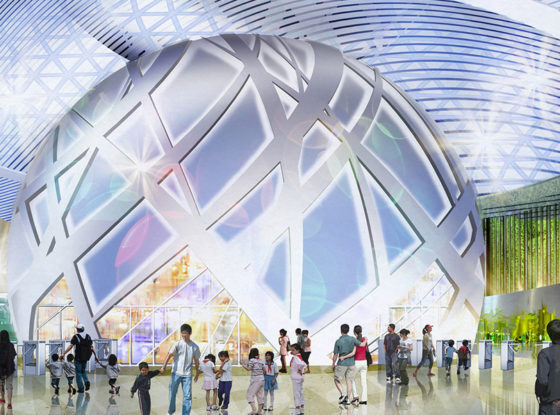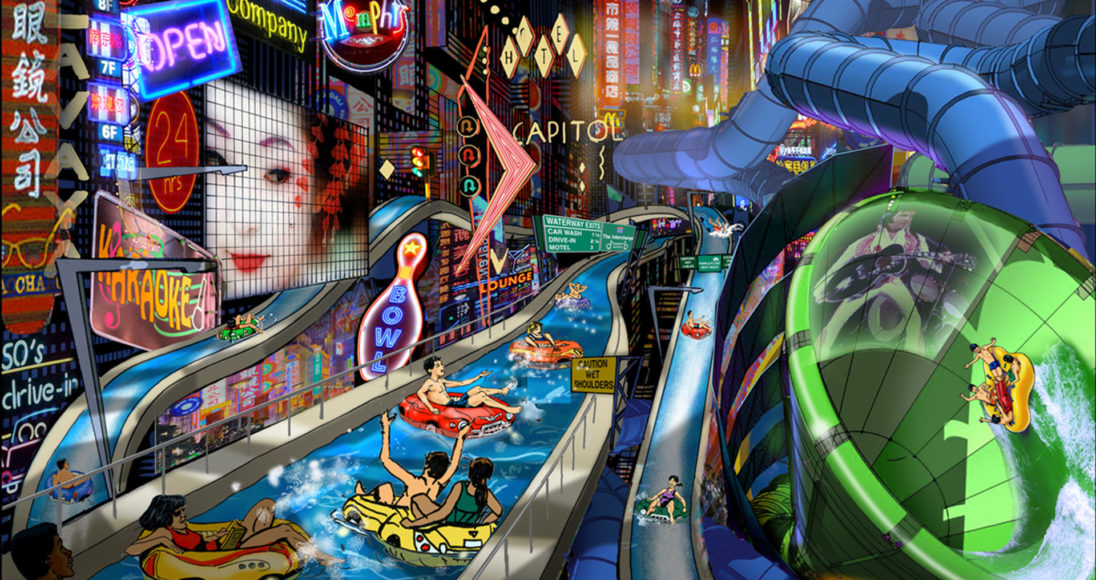FORREC’s Creative Studio is the creative wellspring. Our team of highly skilled creative professionals spend their days coming up with ideas that are as compelling as they are works of art. All studios in FORREC cross paths with the Creative Studio at some point because this team is truly the playground where ideas come to life. It’s a group that loves to find the story at the heart of our clients’ projects. So ever wonder what goes on behind the scenes and how our Creative Studio does it? You’re in luck because we’re sharing how our designers create 3D renders, and interactive models, and their all about their process.
Deep-Space Theme Park
Strong designs require a balance of contrasting elements to create drama and interest. To show this, concept artist John Lowndes took us behind the scenes in his creation of a portal for a Deep-Space themed park, where he combined organic materials that evoke an alien landscape with clean, crisp architectural elements that harken back to classic science fiction and space operas, like Flash Gordon, Star Trek or the Jetsons.
When coming up with ideas, creating, sketching and rendering, there are four important steps designers must take to really make the clients’ vision come to life digitally:
Step 1 – Silhouette
The goal in concept art is to explore options and make the big decisions before a project progresses to the heavy lifting. Just like designing a character, it’s important to create an interesting silhouette that would draw the eye in, while adhering to the overall goal of the project. The shape chosen contrasts the jagged diagonals of natural rock with the strong verticals of its futuristic towers and a welcoming round gateway.
Step 2 – Rendered Elevation
A sketch can tell us a lot about a design intent, but most clients want to have a clear image of the final structure before signing off on one. Rendering an elevation uses a combination of painted colours and composited photos in order to clearly define the various textures and moods at work in a design. It’s a fairly fast process when done right, and can give the entire design team a strong understanding of what the final product will be.
Step 3 – 3D Blocking
At FORREC we have a team of extremely talented modelers, who take designs from our architects and the creative studio and bring them to life in virtual space. Using the rendered elevation from the previous step, you should have a strong blueprint to model from, with direct reference for shape, scale and texture. The process of modelling was done solely within Blender, a free-to-use modelling software which offers wide creative control. The benefit to the time spent in Blender is that now we have the gate built in 3D space, which can be lit and photographed in infinite ways for final views.
Step 4 – POV
Almost all of FORREC’s projects involve what we call POV’s: an intimate, ‘in the eyes of the guest’ view of some of the main attractions to get the client excited about what we have dreamt up. Using the 3D model from the previous step, the gate was lit, photographed and brought back into Photoshop. Here it could be painted, textured and brought to life with guests to make the model feel like a real, inhabited space. The subject matter of old-school science fiction allowed me to veer into a more hyper-real colour palette, driving home the theme for this final show-stopper.
To see more of John’s work, make sure to check him out on Instagram!



